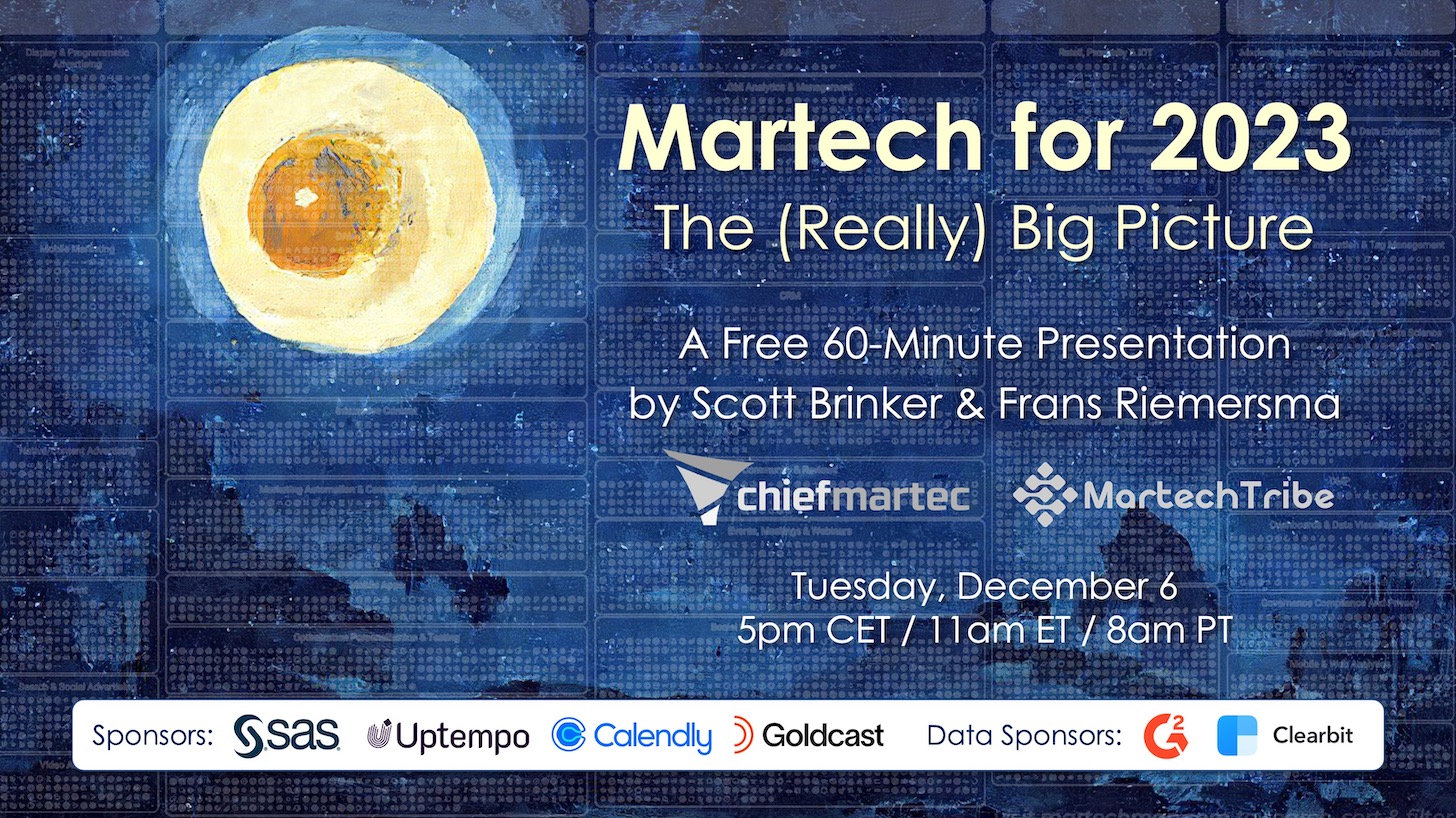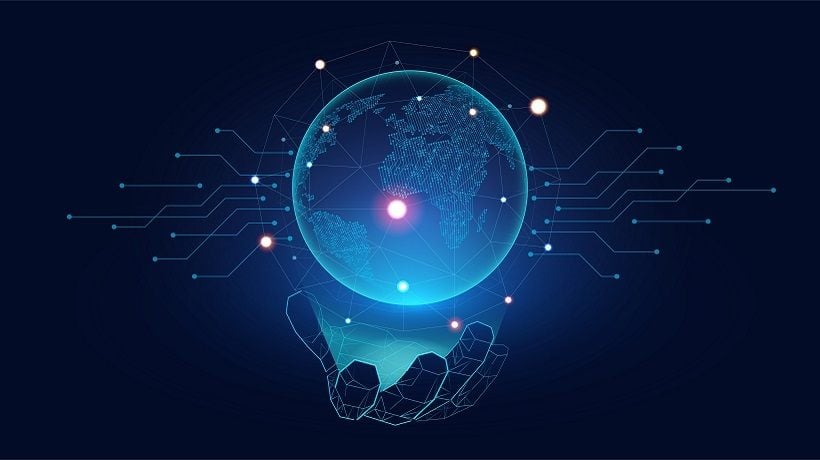Why there are 10,000 martech products that “kinda all do the same thing” (but not really)

Just one of the perennial criticisms of the martech landscape is that “most of these products and solutions all do the same thing.” Send an e mail. Render a web webpage. Evaluate some details. This criticism has developed louder in proportion to the advancement of the landscape.
With an progressively exasperated tone, people request, for case in point, “What’s the stage of hundreds of CRMs or internet marketing automation instruments? They’re all just storing the identical buyer fields and mail merging them into strategies.”
I have usually experienced two reverse responses to that accusation.
Initial, I get a minimal defensive and say, “Hey, there are authentic innovations that occur in martech all the time. For occasion, you cannot appear at a product or service like DALL-E 2, that magically generates illustrations or photos from any description you can convey in phrases, and not appreciate that, wow, this genuinely is a thing new under the sun.”
But not all innovations in martech are that amazing. Coming up with the first couple reverse ETL equipment to conveniently (re)hydrate facts into your app stack from your details warehouses was tremendous beneficial. But it was not deserving of a headline in The New York Times.
So, my fallback reaction is to admit, “Yeah, I guess you’re proper. All e-mail advertising resources kinda do the exact same detail. But, hey, on the dazzling facet, that type of commoditized competition among the vendors must be fantastic for you as a marketer. Laws of economics: it ought to push down your cost.”
That frequently mollified these critics, who largely just wished me to acquiesce to their intestine-stage belief that the martech landscape was all audio and fury signifying nothing at all. But it didn’t sit very well with me. It did not seem to be to explain the sheer quantity of variants of goods in martech categories nor the monumental quantity of intellectual money that held getting invested in them.
A few-Tier Architectures: Info, Conclusions, Shipping and delivery
Let’s start off by recognizing that most software program follows a sample of 3 tiers or levels:
- Facts — at the bottom: information stored in a database
- Presentation — at the top rated: what appears on the display to end users
- Business Logic — in the center: decisions and flow among the other two levels
David Raab, the inventor of the CDP class, mapped these to three phases of knowledge, conclusions, and shipping. (I wrote an short article previous 12 months riffing on that product referred to as Information, Decisioning, Delivery & Style and design to distinguish CDPs from cloud info warehouses, CDWs.)
But these 3 levels are not equivalent in scale or complexity.
The information layer looks intuitive as the most straightforward layer. If you are chatting about buyer data, these as in CRM, there are usually a finite quantity of fields getting saved. And the most significant fields are normally the exact same: name, firm, title, e mail, phone number, address, etc.
Of system, all consumer information isn’t entirely that homogenized. Unique firms acquire different info around buys, customer behaviors, demographic, firmographics, technographics, and so on. There can be relational information connecting all those clients with campaigns, method, and companions.
Having said that, the amount and dispersion of variation is modest. In other terms, the info layer is rather susceptible to commoditization.

What about the presentation or shipping and delivery layer? Most folks — in particular UX gurus — would say there’s a great deal a lot more scale and complexity below. It’s anything that all people sees or hears!
Intuitively, there is great variation in presentation. Some interfaces are stunning many others are unattractive. Some clearly show you accurately what you want, where by you want it some others are a sizzling mess that your eyes painfully bushwhack by means of to uncover the one matter you were truly on the lookout for.
So presentation is an place of differentiation, not commoditization, correct?
Truly, no.
Forgive me for having a little bit philosophical right here, but have faith in me, there’s a significant point to it.
The technical layer of presentation is in fact rather constrained. There are only so quite a few pixels, of so many hues, that you can set on a display. I’m not speaking about what people pixels stand for — which is a little something various, which we’ll get to in a instant. The uncooked pixels and their typical patterns veer in the direction of commodities.
For that make any difference, if we extend outside of just “presentation” to deal with other facets of “delivery” — how that presentation essentially arrives in front of someone — that is very commoditized way too. The HTTPS protocol for net internet pages. The SMTP protocol for electronic mail. The SMPP protocol for text messages. These aren’t just commodities, they’re standards.
Now right before designers start out sending me anatomically unflattering wireframes of where by I can adhere this submit, permit me immediately follow up that design and UX are unbelievably advanced and crucial sides of products and solutions and encounters that supply tremendous opportunity for differentiation. (Appear, I even put it in bold!)

But the magic and mastery of style and design and UX isn’t in the supply. It’s in the choices about what to supply — when, where, how, to whom.
It is the choices in UX that create differentiation.
Decisions Are the Wellspring of Differentiation
Most of application is decisioning. All individuals directions functioning by way of processors deciding if this, then that, hundreds of thousands of moments per minute. The vast majority of code in applications is “business logic”, a broad ocean involving the seabed of prevalent info and the fairly thin waves of presentation delivered on the area.
The scale of the decisions layer in software package is substantial. I have drawn it as 80%, relative to 10% for details and 10% for shipping, in my diagram. But it’s in all probability nearer to 98% vs. 1% and 1% in most purposes.

It’s also advanced. And I imply “complex” in the scientific feeling of quite a few interacting pieces — and not just isolated within just that a person software by itself. The conclusions one computer software app will make are affected by the conclusions other linked software applications make. In a stack of dozens of applications, hundreds of details sources, and countless numbers or tens of millions of end users, all feeding distinctive inputs into a program’s final decision-producing, you have an astronomical established of prospects.
It is in this intricate setting the place various software program apps deliver to bear unique algorithms, frameworks, workflows, and styles to make selections in unique ways.
There are three critical details about this conclusions layer:
- It’s the most significant part of what composes a program application.
- Collectively, there’s a close to infinite variety of distinctive feasible decisions.
- These choices can have substantial, substance effects on enterprise outcomes.
The very last position should really be self-apparent. Companies contend on the decisions they make. If you really do not assume you can make distinctive — much better — choices than your opponents, you need to likely take into consideration a profession as a hermetic monk. (Ironically, a extremely differentiated determination to make.)
The choices layer in software is a large canvas for differentiation. And with its opportunity impact on results, it is a massive canvas for significant differentiation.
Just about no two program applications — at the very least apps of any sizeable dimension — are the similar.
Martech: Commoditized and Differentiated
When you look at the high-level categories of the martech landscape, these as a large bucket for CRM, with hundreds of logos, it is truthful to say that, certain, in some wide sense, all those applications are the similar. They are all for client connection management.

You could also rightfully say that the knowledge saved in those people CRMs are usually very identical way too. As are the supply channels in which they serve up presentation to staff back again-phase and customers front-stage. By way of those lenses, they are commoditized merchandise.
But the gigantic mass of conclusions in just about every of these different CRMs may differ tremendously.
Spend some time working with HubSpot (disclosure: the place I get the job done), Microsoft Dynamics, and Salesforce, and you will appreciate just how diverse these CRMs are. Surely for your experience as a consumer. But from the myriad of points that lead to differentiated expertise for you in those CRMs springs a fount of distinct enterprise choices and client interactions.
Is one particular definitely superior than the others? (I’ll resist my individual bias in answering that.) Provided the broad adoption of all 3, you have to conclude that the answer to that concern is distinctive for various firms.
(Certainly, it’s a meta-conclusion to come to a decision which choices bundled in a CRM platform you prefer, to enable you make better decisions for your consumers, to then enable them make superior conclusions in their organizations, and so on. Turtles all the way down? Nope, it is choices all the way down.)
And it’s not just individuals 3 CRMs. It is the hundreds of other people. Each a person formulated by diverse folks bringing diverse strategies, philosophies, frameworks, and implementation alternatives to the big quantity of selections embedded in their item. All of which ripple into distinctions for how your business enterprise will essentially run in zillions of very small ways… but which aggregate into not-so-small differences.
Far more colloquially, this is called opinionated application.
Now, not all individuals dissimilarities will be fantastic kinds. It’s a Darwinian current market for sure. Some CRM platforms will prosper other folks will go extinct. New CRM startups will sprout with new variations. Over time, there may perhaps be far more or fewer. But there is space for different CRMs with various final decision layers to legitimately exist, as very long as every just one has a purchaser base — even if, or it’s possible specially if, it’s a area of interest — who desire the exclusive selections of that vendor.
This dynamic is existing throughout all types in martech.
Incremental Innovation Is Continue to Innovation
Now, are the distinctions in the selections layer concerning two martech products in the very same group breakthrough, leap-frogging improvements?
Admittedly, most of the time, no. They’re far more often “incremental innovation” — discovering better ways to do one thing, not so considerably producing fully new somethings. But it would be a error to disdain, “Pffft, that’s only incremental innovation.”
Incremental innovation is nonetheless innovation. It can meaningfully differentiate one particular seller from a further and provide good added benefits to their prospects.
This why martech has 10,000 products and solutions that all kinda do the very same detail — but not actually.








